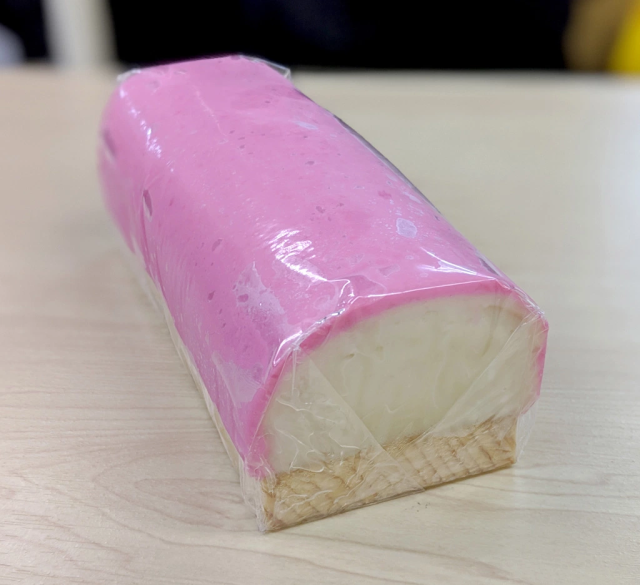
When you send Mr. Sato out to do the shopping, sometimes he comes back with something crazy.
You might not guess it from all the time we spend scouring the country for 100-yen (US$0.88) underwear, 10-yen soft drinks, and 1-yen cameras, but we actually work just a short walk from one of the most luxurious shopping destinations in all of Tokyo. But it’s not just the fashions that are fancy at the Shinjuku branch of department store Isetan, but the food too.
In addition to hosting culinary events celebrating wagyu beef and gyokuro green tea, the Shinjuku Isetan has a sprawling gourmet supermarket in its basement level, and our reporter Mr. Sato recently found himself browsing its aisles.
As has been happening with troubling frequency these days, Mr. Sato suddenly felt a mysterious force compelling him to open his wallet as he stood in proximity to all the high-end edibles. Before he realized what had happened, he was back at SoraNews24 headquarters with a shopping bag but no recollection of what he’d bought. Looking at the receipt in his hand wasn’t much help either, since it just said neiriseihin, meaning “paste product,” and showed a total purchase price of a whopping 5,400 yen (US$48).
Attempting to unravel the mystery, he reached into the bag and pulled out an elegant wooden box, an realized that he’d splurged on some top-of-the-line kamaboko, or fish sausage.
While kamaboko is eaten year-round in Japan, it’s especially popular for celebrating New Year’s, with its pink outer layer and white inner core being considered close enough to the auspicious red-and-white color scheme of auspicious New Year’s decorations.
The kamaboko Mr. Sato had bought comes from Tokyo seafood product company Kibun and is made with 100-percent croaker fish. A pleasant scent of the sea greeted Mr. Sato as he unwrapped it, and his anticipation only grew as he cut a few slices. The texture was firm but supple, with no trace of the soggy condition that afflicts some cheaper kamaboko, and yet this extra-expensive version still had an enticing luster.
Usually, kamaboko is eaten like sashimi: you pick up a piece with your chopsticks and dip it in soy sauce before popping a morsel in your mouth. But to his delight, Mr. Sato discovered that the kamaboko he’d bought was tasty enough to enjoy without any extra condiments, and he quickly polished off a plate before he felt the gaze of his coworker, Ahiru Neko, on him as he stuffed himself with the pricey foodstuff.
Generous guy that he is, Mr. Sato cut a few more slices, then offered one to Ahiru Neko. But in contrast to the way joy Mr. Sato’s taste buds had experienced, Ahiru Neko’s reaction was far less enthusiastic: “Yeah, it tastes good and all, but it’s just kamaboko, right?”
It is true that kamaboko, like many Japanese delicacies, doesn’t have an overpoweringly heavy flavor. It’s also true that you can find passable-tasting versions for far less than what Mr. Sato paid, though they don’t come in snazzy wooden boxes.
▼ On the left: Mr. Sato’s 5,400-yen kamaboko from Isetan
On the right: Some 100-yen kamaboko from the convenience store
Perhaps Mr. Sato simply has more cultured, developed taste buds than Ahiru Neko, or maybe there’s a subliminal effect at play where his brain won’t allow him not to like the flavor of something he just dropped 50 bucks on. Either way, he knows that he thought the high-end kamaboko was great, and if Ahiru Neko doesn’t share his opinion, and so isn’t going to ask him to share, that’s fine by him.
Photos ©SoraNews24
[ Read in Japanese ]

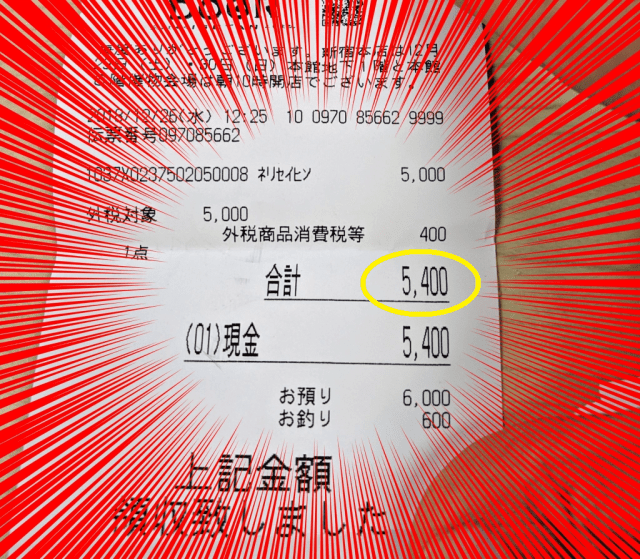
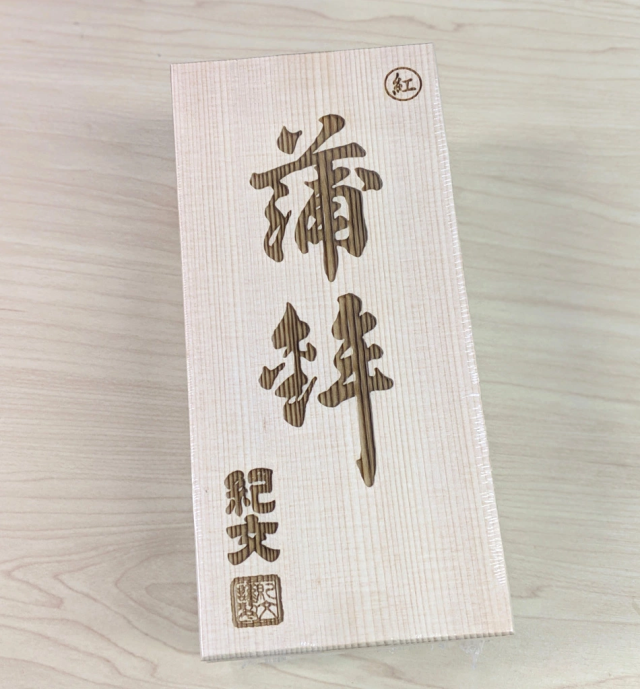
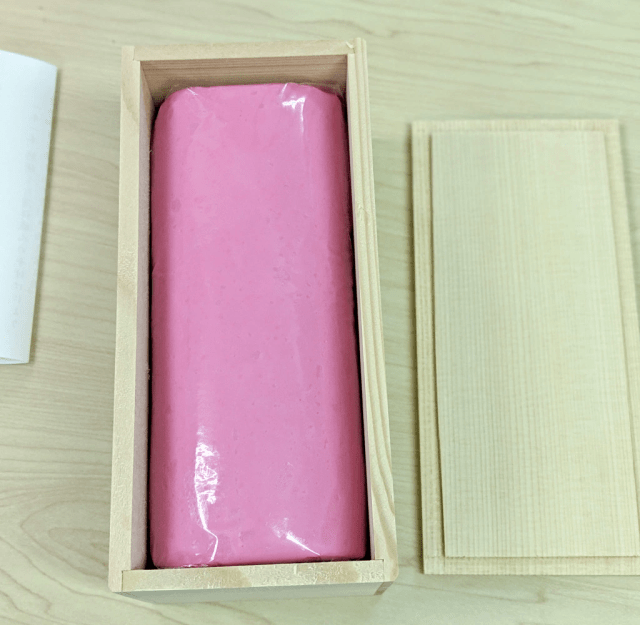
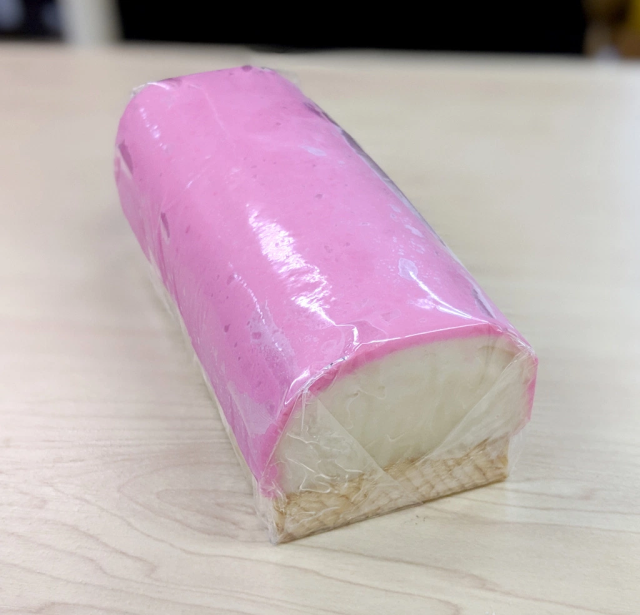
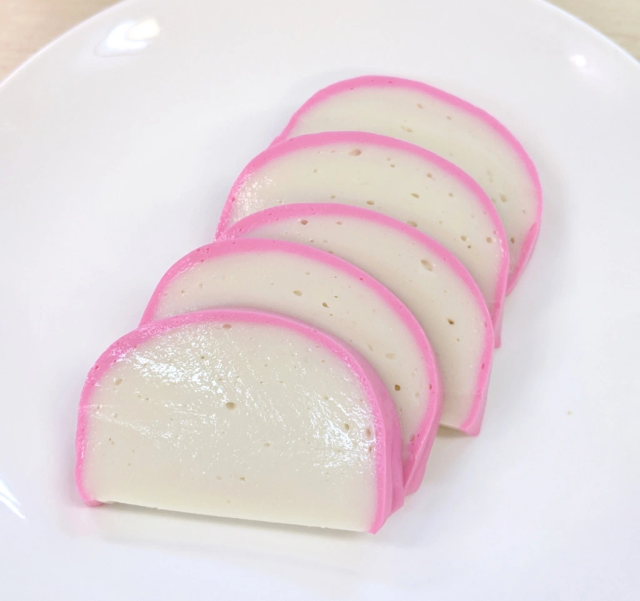

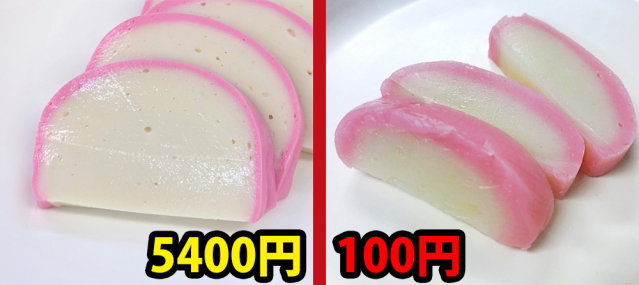
 Can our writers’ taste buds pick out the luxury kamaboko fish cake from these two?
Can our writers’ taste buds pick out the luxury kamaboko fish cake from these two? Curry for babies? Spending a whole day eating nothing but Japanese baby food【Taste tests】
Curry for babies? Spending a whole day eating nothing but Japanese baby food【Taste tests】 Save those coins – Extra-expensive capsule machine toys are on their way in Japan
Save those coins – Extra-expensive capsule machine toys are on their way in Japan Is that restaurant in Tokyo with the giant mecha crab sign any good?
Is that restaurant in Tokyo with the giant mecha crab sign any good? This is what a 10,800-yen (US$100) Tokyo sushi boxed lunch looks like【Taste test】
This is what a 10,800-yen (US$100) Tokyo sushi boxed lunch looks like【Taste test】 Red light district sushi restaurant in Tokyo shows us just how wrong we were about it
Red light district sushi restaurant in Tokyo shows us just how wrong we were about it Tokyo Tsukiji fish market site to be redeveloped with 50,000-seat stadium, hotel, shopping center
Tokyo Tsukiji fish market site to be redeveloped with 50,000-seat stadium, hotel, shopping center Sandwiches fit for a sumo served up in Osaka【Taste Test】
Sandwiches fit for a sumo served up in Osaka【Taste Test】 Anime girl English teacher Ellen-sensei becomes VTuber/VVTUber and NFT
Anime girl English teacher Ellen-sensei becomes VTuber/VVTUber and NFT McDonald’s new Happy Meals offer up cute and practical Sanrio lifestyle goods
McDonald’s new Happy Meals offer up cute and practical Sanrio lifestyle goods Sakura tree falls on man at Sannenzaka near Kiyomizu temple in Kyoto 【Breaking News】
Sakura tree falls on man at Sannenzaka near Kiyomizu temple in Kyoto 【Breaking News】 Japan’s massive matcha parfait weighs 6 kilos, contains hidden surprises for anyone who eats it
Japan’s massive matcha parfait weighs 6 kilos, contains hidden surprises for anyone who eats it Pokémon Sleep camping suite and guestrooms coming to Tokyo Hyatt along with giant Snorlax burgers
Pokémon Sleep camping suite and guestrooms coming to Tokyo Hyatt along with giant Snorlax burgers Japanese ramen restaurants under pressure from new yen banknotes
Japanese ramen restaurants under pressure from new yen banknotes Historical figures get manga makeovers from artists of Spy x Family, My Hero Academia and more
Historical figures get manga makeovers from artists of Spy x Family, My Hero Academia and more All-you-can-drink Starbucks and amazing views part of Tokyo’s new 170 meter-high sky lounge
All-you-can-drink Starbucks and amazing views part of Tokyo’s new 170 meter-high sky lounge More foreign tourists than ever before in history visited Japan last month
More foreign tourists than ever before in history visited Japan last month French Fries Bread in Tokyo’s Shibuya becomes a hit on social media
French Fries Bread in Tokyo’s Shibuya becomes a hit on social media Studio Ghibli releases new action figures featuring Nausicaä of the Valley of the Wind characters
Studio Ghibli releases new action figures featuring Nausicaä of the Valley of the Wind characters New private rooms on Tokaido Shinkansen change the way we travel from Tokyo to Kyoto
New private rooms on Tokaido Shinkansen change the way we travel from Tokyo to Kyoto Starbucks reopens at Shibuya Scramble Crossing with new look and design concept
Starbucks reopens at Shibuya Scramble Crossing with new look and design concept Studio Ghibli glasses cases let anime characters keep an eye on your spectacles
Studio Ghibli glasses cases let anime characters keep an eye on your spectacles Beautiful Ghibli sealing wax kits let you create accessories and elegant letter decorations【Pics】
Beautiful Ghibli sealing wax kits let you create accessories and elegant letter decorations【Pics】 Studio Ghibli releases Kiki’s Delivery Service chocolate cake pouches in Japan
Studio Ghibli releases Kiki’s Delivery Service chocolate cake pouches in Japan New definition of “Japanese whiskey” goes into effect to prevent fakes from fooling overseas buyers
New definition of “Japanese whiskey” goes into effect to prevent fakes from fooling overseas buyers Our Japanese reporter visits Costco in the U.S., finds super American and very Japanese things
Our Japanese reporter visits Costco in the U.S., finds super American and very Japanese things Studio Ghibli unveils Mother’s Day gift set that captures the love in My Neighbour Totoro
Studio Ghibli unveils Mother’s Day gift set that captures the love in My Neighbour Totoro New Japanese KitKat flavour stars Sanrio characters, including Hello Kitty
New Japanese KitKat flavour stars Sanrio characters, including Hello Kitty New Pokémon cakes let you eat your way through Pikachu and all the Eevee evolutions
New Pokémon cakes let you eat your way through Pikachu and all the Eevee evolutions Disney princesses get official manga makeovers for Manga Princess Cafe opening in Tokyo
Disney princesses get official manga makeovers for Manga Princess Cafe opening in Tokyo Sales of Japan’s most convenient train ticket/shopping payment cards suspended indefinitely
Sales of Japan’s most convenient train ticket/shopping payment cards suspended indefinitely Sold-out Studio Ghibli desktop humidifiers are back so Totoro can help you through the dry season
Sold-out Studio Ghibli desktop humidifiers are back so Totoro can help you through the dry season Japanese government to make first change to romanization spelling rules since the 1950s
Japanese government to make first change to romanization spelling rules since the 1950s Ghibli founders Toshio Suzuki and Hayao Miyazaki contribute to Japanese whisky Totoro label design
Ghibli founders Toshio Suzuki and Hayao Miyazaki contribute to Japanese whisky Totoro label design Doraemon found buried at sea as scene from 1993 anime becomes real life【Photos】
Doraemon found buried at sea as scene from 1993 anime becomes real life【Photos】 Tokyo’s most famous Starbucks is closed
Tokyo’s most famous Starbucks is closed One Piece characters’ nationalities revealed, but fans have mixed opinions
One Piece characters’ nationalities revealed, but fans have mixed opinions We asked a Uniqlo employee what four things we should buy and their suggestions didn’t disappoint
We asked a Uniqlo employee what four things we should buy and their suggestions didn’t disappoint Princesses, fruits, and blacksmiths: Study reveals the 30 most unusual family names in Japan
Princesses, fruits, and blacksmiths: Study reveals the 30 most unusual family names in Japan Beautiful hydrangea pattern adds a touch of elegance to traditional Japanese fish cake
Beautiful hydrangea pattern adds a touch of elegance to traditional Japanese fish cake Is Japan’s new Super Thick Ramen worth waiting two hours in the Tokyo cold for?【Taste test】
Is Japan’s new Super Thick Ramen worth waiting two hours in the Tokyo cold for?【Taste test】 Soft and tasty cat paws win our hearts — no, they’re not marshmallows, they’re fishcakes!
Soft and tasty cat paws win our hearts — no, they’re not marshmallows, they’re fishcakes! We dare Tokyo’s pigeons to crap on us because we think it’ll make us rich【Experiment】
We dare Tokyo’s pigeons to crap on us because we think it’ll make us rich【Experiment】 Los Angeles’s 2000-calorie XXXL Fatburger destroys our Japanese reporter on trip in the U.S.
Los Angeles’s 2000-calorie XXXL Fatburger destroys our Japanese reporter on trip in the U.S. $89 “Phantasmal Sushi Roll” fancies up life with Matsusaka beef and truffle salt 【Taste Test】
$89 “Phantasmal Sushi Roll” fancies up life with Matsusaka beef and truffle salt 【Taste Test】 We piss our pants over and over to find the most comfortable Japanese baby diaper to pee in
We piss our pants over and over to find the most comfortable Japanese baby diaper to pee in Annual Tokyo memorial for March 11 tsunami comes with a heartwarming musical surprise【Video】
Annual Tokyo memorial for March 11 tsunami comes with a heartwarming musical surprise【Video】 We tried takoyaki-flavored toothpaste with surprising results【Taste test】
We tried takoyaki-flavored toothpaste with surprising results【Taste test】 What the heck is okame soba?
What the heck is okame soba? Gorgeous sheets of Japanese edible color will make your next bento project look incredible【Pics】
Gorgeous sheets of Japanese edible color will make your next bento project look incredible【Pics】 Be Mr. Sato’s online friend, and he might take you to dinner, like he did with these foreign fans
Be Mr. Sato’s online friend, and he might take you to dinner, like he did with these foreign fans Tokyo’s spicy cod roe ice cream: An unexpected dessert that tastes about like what you’d expect
Tokyo’s spicy cod roe ice cream: An unexpected dessert that tastes about like what you’d expect Mr. Sato stuffs himself at an all-you-can-eat bakery event and ascends to carb heaven【Pics】
Mr. Sato stuffs himself at an all-you-can-eat bakery event and ascends to carb heaven【Pics】 Mr. Sato channels his inner Elsa, books a night at a Hokkaido ice hotel 【Photos】
Mr. Sato channels his inner Elsa, books a night at a Hokkaido ice hotel 【Photos】 We tested out an anti-UV umbrella to see how much it cools us down in this dreadful summer heat
We tested out an anti-UV umbrella to see how much it cools us down in this dreadful summer heat
Leave a Reply